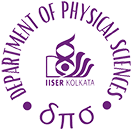Trapping and exciton-exciton annihilation assisted ultrafast carrier dynamics in nanosheets of 2H-MoSe2and Cr doped 1T/2H-MoSe2
Research Highlights from Ultrafast and Terahertz spectroscopy (UFTS) group led by Dr. Kamaraju
Transition metal dichalcogenides (TMDC) in monolayer or few-layers form have attracted significant interest due to their intriguing physical properties, such as layer-dependent band structure, high exciton binding energy, valley selective optical excitation and applications like electrocatalysis, photocatalysis, optoelectronics. The preparation of TMDCs via colloidal synthesis method has been drawing considerable attention recently due to their extremely low-cost fabrication, efficient control over size and shape, and easy implementation in device fabrication via methods such as drop-casting, and spray-coating. Despite several advantages, unintentionally formed defect states in these colloidally synthesized TMDCs are crucial in device- performance and need proper characterization for efficient device formation.
In this work we have employed ultrafast time-resolved non degenerate pump–probe spectroscopy to explore the role of defects in carrier dynamics of colloidally synthesized few-layer single-phase 2H-MoSe2 and mixed-phase 1T/2H-MoSe2 nanosheets. Metastable metallic 1T-phase has been introduced via Cr doping to coexist with stable 2H-phase to form stable mixed-phase 1T/2H-MoSe2 nanosheets which has been selected for pump-probe studies to reveal the physical processes governing its enhanced photocatalytic activities compared to 2H-MoSe2. After above bandgap excitation and probing at A-exciton peak, the differential probe transmission data for both the samples show photo-induced bleaching at earlier pump-probe delay followed by photo-induced absorption unveiling signatures of exciton-state filling, exciton trapping, defect-mediated photo-induced probe absorption and recombination of defect bound excitons. Pump-fluence dependent reduction of decay time constants of bound-exciton-recombination and further modelling of exciton population using higher order kinetic rate equation reveals that the two-body exciton-exciton annihilation governs the exciton recombination process initially with a decay rate of ∼10−8 cm3 s −1. Our analysis also suggests that the fraction of total excitons that decay via long decay channel decreases with increasing exciton density for 2H–MoSe2, in contrast to 1T/2H–MoSe2 where the fraction of excitons decaying via long decay channel remains constant, consistent with its higher photocatalytic efficiency. This work estimating crucial parameters such as trapping time, exciton-exciton annihilation rate, and shares of many-body and single-body processes in the exciton-decay should be instrumental in optimizing properties of colloidally synthesized mixed-phase MoSe2 nanosheets for applications like optoelectronics and photocatalysis.
#Research Highlight
Posted on: November 3rd, 2023

